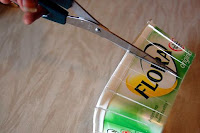
As part of our
Composting Challenge, Bean Sprouts presents the top ten composting systems.
1. Pile up organic stuff in a heap and wait
PROS: cheap, easy, effective
CONS: takes up space, quite slow
2. Build a compost box, either make your own or buy it like
this one from Wiggly Wigglers.
PROS: more aesthetically appealling than a heap
CONS: they can be quite pricey if you buy them, you need a suitable spot in your garden

3. Plastic compost bin, aka "dalek". You might be able to get a free or subsidised one from your council, visit the
RecycleNow website to find out.
PROS: even tidier than a compost box, quite compact
CONS: you still need a garden or at least a patio
4. Tumbler, such as
this one at Just Green.
PROS: supposed to be faster than a dalek, sounds quite good fun
CONS: space again, and are they easy to turn when they're full or do you have to be quite strong?
5.
Green ConePROS: can compost cooked food, meat or fish, bones, dairy products which other composting systems can't deal with
CONS: They're not cheap, you need a garden with some earth as half of the system is buried underground.

6. Leaf mould composting. There's a
video about it herePROS: make something useful out of fallen leaves, very easy
CONS: you need enough leaves to start with, takes a long time
7. Bokashi, an effective microorganism (EM) that speeds up composting incredibly. Here is the
system sold by Wiggly WigglersPROS: very quick, can compost in a sealed bin indoors
CONS: cost, you have to keep buying the bran impregnated with EMs.
8. Trench composting - basically fill a trench with organic waste, cover it over, and plant on top. There are instructions on
how to do this at InstructablesPROS: Cheap, you can combine this with the bokashi method by adding some EM impregnated bran to the trench to speed up composting
CONS: All that digging is hard work, you need a garden you're willing to dig up so maybe not suitable if all you have is lawn and flowerbeds
9. Wormery, such as
these from WormcityPROS: some systems are suitable for indoor use, good if you don't have large volumes of compostable waste
CONS: if you get it wrong the worms can die, some people are squeamish about worms

10. Compost toilet, like
these from NatSolPROS: recycle your own humanure, modern ones look just like normal toilets
CONS: A lot of people might feel this is a step too far, you've got to remove the compost at the end of the process
If you decide to try one of these methods, please vote in the poll in the right hand side bar.
 Since the kids helped dyeing yarn with Kool Aid and making our own knitting needles, they're keen to try knitting. The book Kids Knitting recommended starting kids with a French knitting spool. It's easier than knitting with needles but it shows them how knitting works, by hooking loops of thread through the loops on the row beneath.
Since the kids helped dyeing yarn with Kool Aid and making our own knitting needles, they're keen to try knitting. The book Kids Knitting recommended starting kids with a French knitting spool. It's easier than knitting with needles but it shows them how knitting works, by hooking loops of thread through the loops on the row beneath.











.jpg)









.jpg)




















.jpg)


